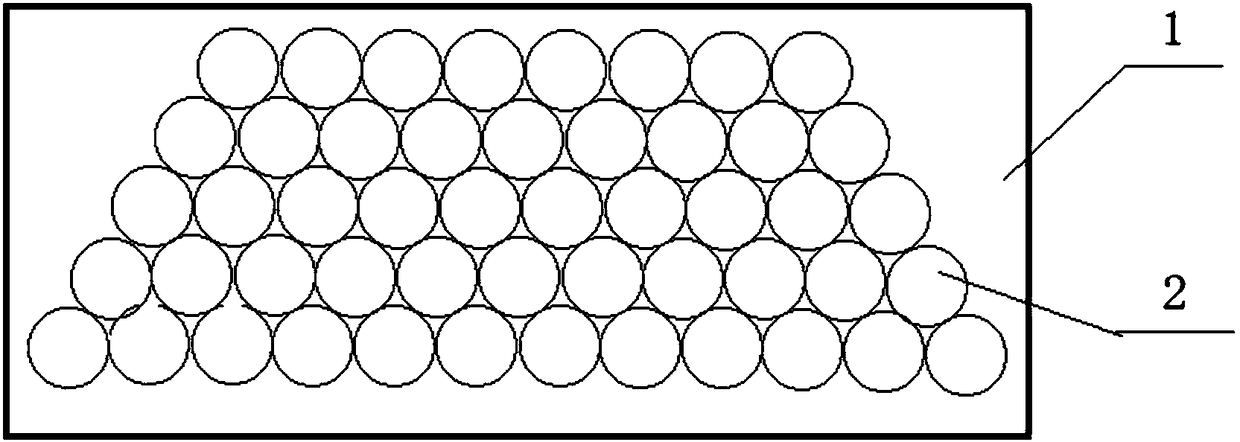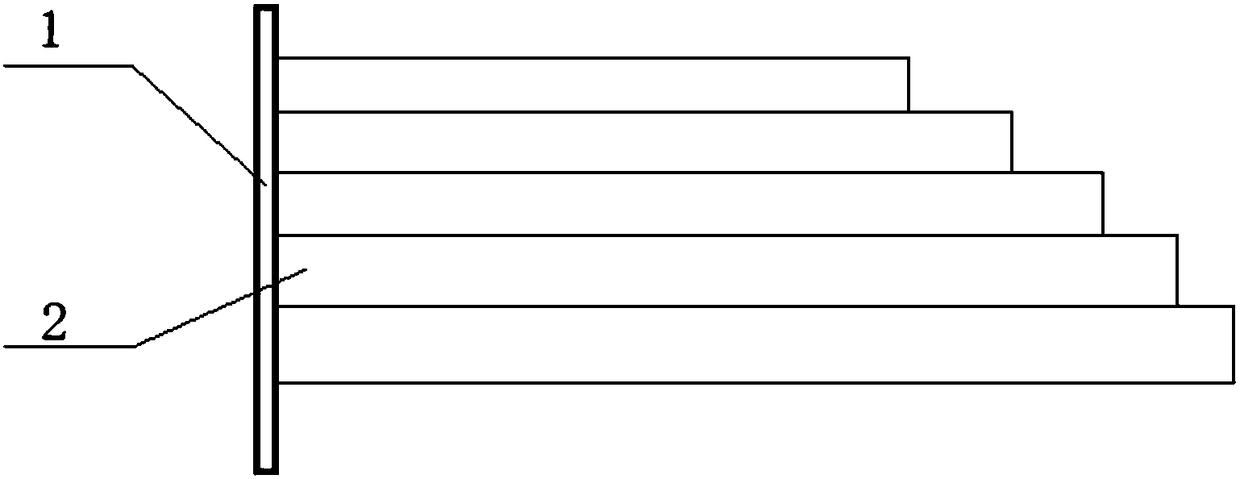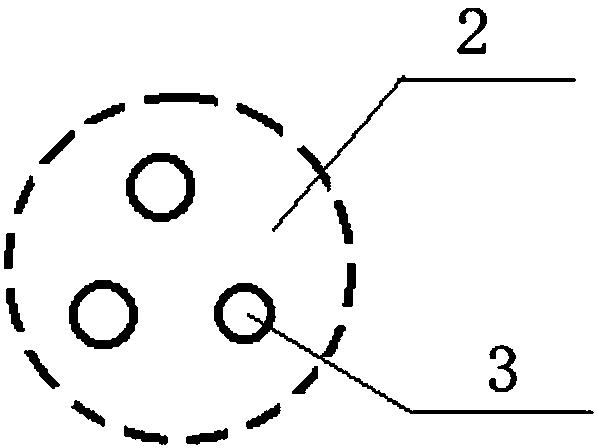Special artificial three-dimensional shrimp nest for procambarus clarkii and method for industrialized and efficient artificial breeding
A technology for artificial breeding of Crayfish, which is applied in application, climate change adaptation, fish farming, etc., can solve the problems of low single-culture yield, low seedling efficiency, and unstable sources of Crayfish. Superior facilities, improved deployment density, controllability and improved management efficiency
- Summary
- Abstract
- Description
- Claims
- Application Information
AI Technical Summary
Problems solved by technology
Method used
Image
Examples
Embodiment 1
[0025] Such as Figure 1-2 Shown: three-dimensional Procambarus clarkii artificial shrimp nest, including end plate 1 and row pipe 2, one end of said row pipe is connected with end plate 1; said row pipe 2 is composed of several tubes, corresponding to The position of every pipe has circular hole 3.
[0026] The number of the row pipes 2 is 5 rows, and the number of each row of pipes from top to bottom is 8, 9, 10, 11, 12 successively, which are connected as a whole by welding. The lengths of the row pipes 2 are 25cm, 30cm, 35cm, 40cm and 45cm in each row from top to bottom, and the diameters are 6cm. The number of circular holes 3 corresponding to each tube is 3, and the diameter of the circular holes 3 is 1 cm.
Embodiment 2
[0028] Procambarus clarkii factory indoor cement nursery pond (area 20-100m 2 ), the nursery pond is 1.2m deep, and the water depth is 60-80cm. In the pool, a special artificial shrimp nest specially made for Procambarus clarkii is placed, and the male and female parents of Procambarus clarkii are placed in the pool from July to September. The ratio of male to female is 5:2, and the stocking density of the parental shrimp is 7 fish / m 2 . Set up a shrimp nest every 5 square meters. Set up a microporous oxygenation tray every 5 square meters. every 50m 2 Set up 2-3 biological floating beds in the nursery pool, 5.0-8.0m long and 2.0-3.0m wide. The aquatic plants are water hyacinth, water peanut or duckweed. The cultivation period of water hyacinth is from October to June of the following year. The cultivation period is from June to October. The power configuration of the microporous aerator is every 3000m 2 / kw. During the breeding period, broodstock adopts technical measu...
Embodiment 3
[0030] Procambarus clarkii factory indoor cement nursery pond (area 20-100m 2 ), the nursery pond is 1.2m deep, and the water depth is 60-80cm. In the pool, a special artificial shrimp nest specially made for Procambarus clarkii is placed. From July to September, the male and female parents of Procambarus clarkii are placed. The ratio of male to female is 5:2, and the stocking density of the parental shrimp is 14 tails / m 2 . Set up a shrimp nest every 3 square meters. Set up a microporous oxygenation tray every 5 square meters. every 50m 2 Set up 2-3 biological floating beds in the nursery pool, 5.0-8.0m long and 2.0-3.0m wide. The aquatic plants are water hyacinth, water peanut or duckweed. The cultivation period of water hyacinth is from October to June of the following year. The cultivation period is from June to October. The power configuration of the microporous aerator is every 3000m 2 / kw. During the breeding period, broodstock adopts technical measures to streng...
PUM
| Property | Measurement | Unit |
|---|---|---|
| Length | aaaaa | aaaaa |
| Diameter | aaaaa | aaaaa |
| Diameter | aaaaa | aaaaa |
Abstract
Description
Claims
Application Information
 Login to View More
Login to View More - R&D
- Intellectual Property
- Life Sciences
- Materials
- Tech Scout
- Unparalleled Data Quality
- Higher Quality Content
- 60% Fewer Hallucinations
Browse by: Latest US Patents, China's latest patents, Technical Efficacy Thesaurus, Application Domain, Technology Topic, Popular Technical Reports.
© 2025 PatSnap. All rights reserved.Legal|Privacy policy|Modern Slavery Act Transparency Statement|Sitemap|About US| Contact US: help@patsnap.com



